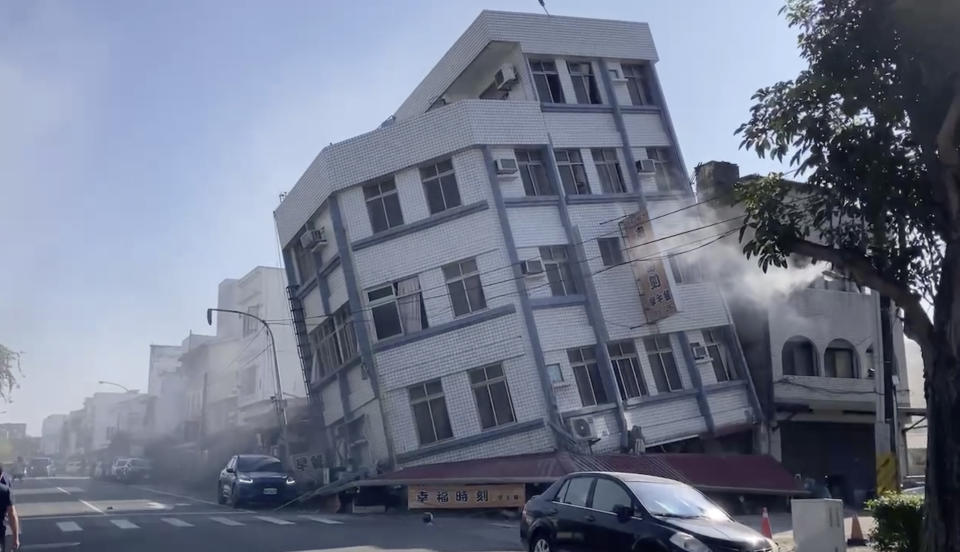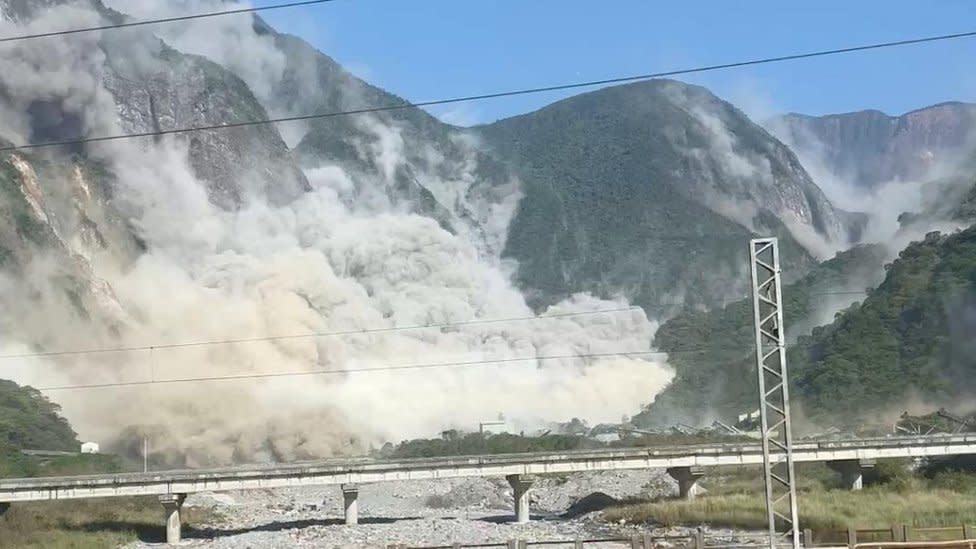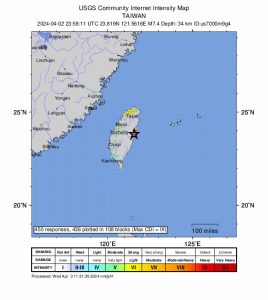The world’s top chipmaker, Taiwan Semiconductor Manufacturing Company (TSMC), has warned that impacts from the earthquake that rocked Taiwan on Wednesday could cause a $60-million hit to its second-quarter earnings.
That preliminary assessment came from Barclays, which noted that work was halted at TSMC and other chip production centres on the island after it was rocked by a 7.2 magnitude earthquake – the biggest in 25 years.
A major supplier of chips to Apple and Nvidia, TSMC said it evacuated some of its fabrication plants and safety systems were operating normally.
“To ensure the safety of personnel, some fabs were evacuated according to company procedure,” the tech giant said in a statement, adding later that the employees had begun to return to work.
ALSO SEE: China’s Solar Sector Seen Facing Years of Oversupply, Low Prices
TSMC’s Taipei-listed shares ended down 1.3%, but the benchmark index largely brushed off the quake’s impact to close down 0.6%.
The quake, which struck at about 8am, killed nine people and more than 800 injured, authorities said. Rescuers were using ladders to rescue at least 77 trapped in tunnels and collapsed buildings.
Television channels broadcast images of buildings tilted at precarious angles in the mountainous, sparsely populated eastern county of Hualien, near the epicentre of the quake. It has endured six major quakes over the past decade.
‘High-end chips need seamless operations’
Barclays said while TSMC was assessing the impact of temblor, other chipmakers’ operations such as United Microelectronics (UMC) were also disrupted.
“Micron also is reportedly evaluating operations in Taiwan following the earthquake. Some chip assembly companies, such as ASE, reported operation remain normal,” analysts Bum Ki Son and Brian Tan reported.
They warned that if disruption was more extensive the economic costs could be more severe, and “we expect some constraints on production, in both Taiwan and the region, that could result in upstream pricing pressure in the chip sector.”
“We also believe the direct effects of the Hualien quake will be felt around the east coast of Taiwan and may have indirect effects on Taiwan’s industrial zones.
“When we overlay the estimate of US Geological Survey with the electronics supply chain in Taiwan, we believe a moderate to strong quake is likely to have been felt in the production facilities in northern Taiwan, and Hsinchu and Taichung, but less so in Tainan and Kaohsiung.
“We believe this could lead to supply disruptions in the tech supply chain. While we note some companies have reported limited damage and many of the semiconductor fabs should have been designed to withstand strong earthquakes, some operation halts in high-tech semiconductor fabs could mean disruptions.
“Some of the high-end chips need 24/7 seamless operations in vacuum state for a few weeks. Operation halts in Taiwan’s northern industrial areas in could mean some high-end chips in production may be spoiled.
“TSMC preliminarily said it would take around six hours to inspect the damages and estimated a US$60m impact on its second-quarter earnings from the earthquake.”

The Barclays analysts said that if semiconductor fabs in Taoyuan, Hsinchu and Taichung are affected, the plants may need to scrap most of the chips in production. They gave the following estimates:
- Taiwan’s upstream and downstream production will be affected – upstream from production losses and downstream due to shortage of components.
- Upstream electronic component manufacturers in the region would also be impacted during the production lead time as downstream production is impacted.
- Downstream consumer electronics could see more de-stocking and the supply shortages in high-end computing and servers would increase.
- In this scenario, we believe there would be a short-term hiccup in electronics production in economies focused on upstream products, such as Taiwan, Japan, and Korea, and in economies focused on downstream products, such as China, Vietnam, Thailand, Malaysia, Taiwan, and Korea. That said, inventory destocking at the customer level is likely to increase the pricing power of Taiwanese and Korean chipmakers.
“If the curtailment of Taiwan’s semiconductor production is limited, we believe there would be a small dent to Taiwan’s economy, but without significant disruptions to regional production or trade,” they said.
They also expected a marginal economic impact on Taiwan’s second-quarter growth from the quake.

Dozens trapped in tunnel
Reuters said the quake hit at a depth of 15.5 km (9.6 miles), just as people were headed for work and school, setting off a tsunami warning for southern Japan and the Philippines that was later lifted.
Video showed rescuers using ladders to help trapped people out of windows, while elsewhere there were massive landslides, as strong tremors in Taipei forced the subway system to close briefly, although most lines resumed service.
Fire authorities said about 60 of the roughly 77 trapped were caught in a tunnel just north of Hualien city, with two Germans among those trapped in another tunnel.
“At present the most important thing, the top priority, is to rescue people,” said President-elect Lai Ching-te, speaking outside one of the collapsed buildings in Hualien.
The rail link to the area was expected to re-open on Thursday, Lai, who is set to take office next month, told reporters.
Taiwan’s air force said six F-16 fighter jets had been slightly damaged at a major base in the city from which jets are often scrambled to see off incursions by China’s air force, but it expected the aircraft to return to service very soon.

Tsunami warnings
In Japan, the weather agency put the quake’s magnitude at 7.7, saying several small tsunami waves reached parts of the southern prefecture of Okinawa, while downgrading its tsunami warning to an advisory.
In the Philippines, seismology officials warned coastal residents in several provinces telling them to move to higher ground.
Chinese state media said the quake was felt in the southeastern province of Fujian, while a witness said it was also felt in the commercial hub of Shanghai.
Aftershocks could still be felt in Taipei, with more than 50 recorded, weather officials said.
Most power has been restored after the quake, electricity utility Taipower said, with the island’s two nuclear power stations unaffected.
Taiwan’s high-speed rail operator said no damage or injuries were reported on its trains, although services would be delayed as it made inspections.
The official central news agency said the quake was the biggest since one of magnitude 7.6 in 1999 that killed about 2,400 people and damaged or destroyed 50,000 buildings.
NOTE: A map was added to this report and the toll of victims killed and injured updated on April 3, 2024.
ALSO SEE:
US Releases Detailed Rules For Export Curbs on AI Chips to China
US ‘Drawing Up List of Sanctioned Advanced Chinese Chip Fabs’
Beijing’s Push to Dump Foreign Tech on Display at China Chip Fair
Global Chip Sector ‘Can Never Return to its Pre-Covid Set-up’
US Curbs Set Off Sales, Tech Boom for China Chip Equipment Firms
Huawei, SMIC Set to Defy US Sanctions With 5nm Chips: FT
Japan to Pump $4.9bn Into Second TSMC Chip Factory Plan



